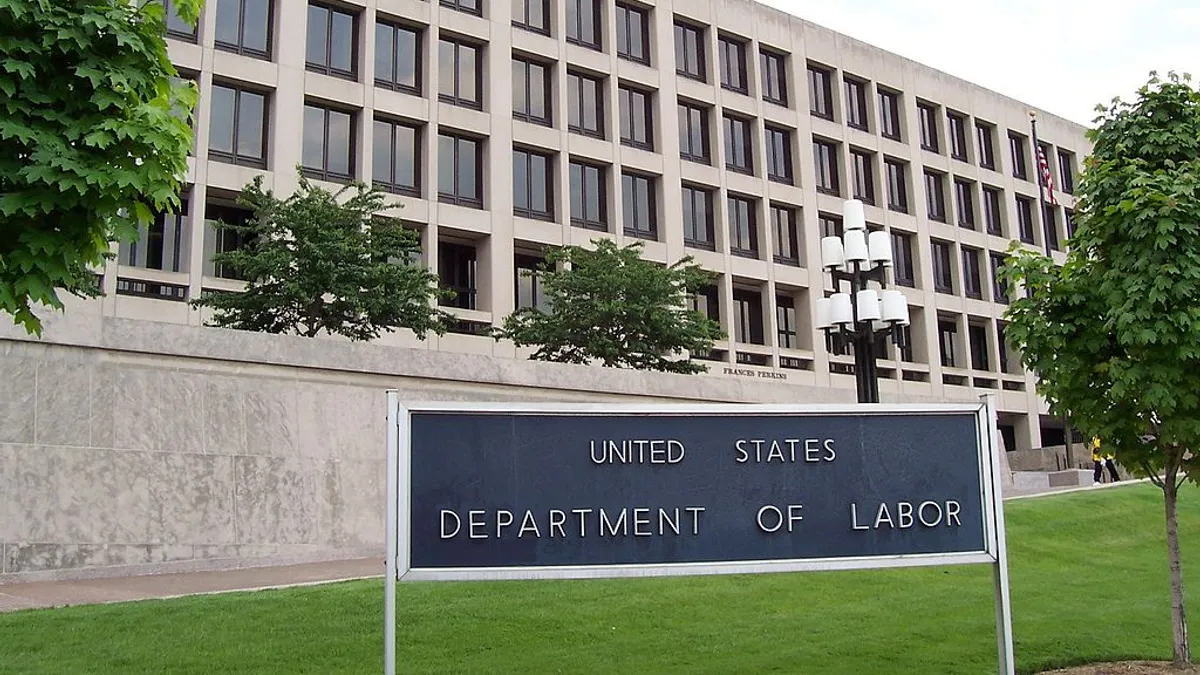Dive Brief:
- The U.S. Department of Labor (DOL) asked stakeholders for input on paid leave programs and potential changes to Family and Medical Leave Act (FMLA) regulations July 16 and July 17, respectively.
- In the paid leave request for information (RFI), the department’s Women’s Bureau asked employers and workers alike to describe "the features of an ideal paid leave program" — including duration and funding. It also asked employers about barriers to paid leave, and whether there are any key insights to be drawn from the temporary paid leave mandate in the Families First Coronavirus Response Act. The public may comment until Sept. 14.
- The second RFI came from the agency’s Wage and Hour Division. Among other things, the agency asked employers for information about challenges applying the FMLA's eligibility criteria and administering intermittent leave. The public may comment until Sept. 15.
Dive Insight:
While it’s notable that DOL is thinking about paid leave, the Women’s Bureau in a statement announcing the RFI said it is specifically "requesting comment on the effectiveness of current state- and employer-provided paid leave programs."
The information, the agency said, will help it "identify promising practices related to eligibility requirements, related costs, administrative models of existing paid leave programs and access to information about paid leave."
So the request doesn’t mean DOL has its sights set on a federal paid leave mandate, according to Morgan Lewis Partner Susan Harthill. "It will not lead to any rulemaking," she said, because the Women’s Bureau doesn’t have regulatory authority and even the larger DOL would need a congressional mandate to implement paid leave in the private sector.
Harthill, who previously served as deputy solicitor for national operations at DOL, said the data the Bureau receives is more likely to inform public policy. It could help Congress devise future paid leave proposals, she said, or inform state and local efforts; the Women’s Bureau has previously provided grants to help states analyze the effectiveness of their paid leave programs, for example.
The second RFI, which seeks information about potential changes to the agency’s FMLA regulations, has been in the works for some time, according to DOL’s regulatory agenda. Initially framed as an effort to reduce employers’ compliance burdens, the latest request remains in line with that effort, Harthill said
It’s unlikely, however, the agency could accomplish all necessary steps — namely, publishing a proposed and then a final rule — before the next presidential inauguration, Harthill said, meaning the fate of any such changes may depend on the outcome of the presidential election. "I don’t see any realistic path to promulgating a final rule before January 2021," she said. "They may be able to take what they get from an RFI and publish a proposed rule but there isn’t enough time to promulgate a final rule by January." And should the U.S. install a new president, the new administration likely would want to review the effort and decide whether to continue it, she said.
Harthill said employers and HR professionals should consider providing comments in response to one or both RFIs. "The whole point is to collect information," she said, "so if … any stakeholder that has an interest in this issue can consider submitting comments and providing information, that could be useful for rulemaking under the FMLA or informing public policy going forward."













